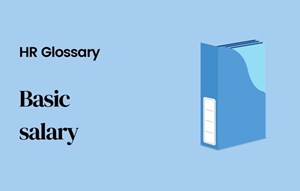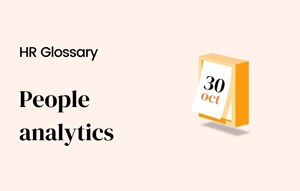9 Box

[Sommaire]
What is a 9 box ?
A 9 box model or 9 box grid is a performance management tool used to analyze and compare employee performance and potential. It places employees in one of nine positions across two axes, current performance and future potential.
This makes workforce planning easier by helping HR and managers identify future leaders and understand development needs.
How do you create a 9 box grid?
The 9 box grid is created by plotting current performance on the x-axis and future potential on the y-axis. They are then generated by dividing the space into 3 columns and 3 rows.
It can be used for a variety of purposes, including succession planning, talent management, and assessing performance with reviews.
Succession planning
When used for the succession planning process, the 9 box grid can help identify high-potential employees who are ready for promotion. It can also help identify development needs so that employees can be given the opportunity to grow into leadership roles.
Talent management
Talent management is another common use for the 9-box grid. HR professionals can more easily identify top talent and create development plans to help them reach their full potential by mapping out employees' performance and potential.
Performance reviews
The nine box grid can also be used during performance reviews to give managers a more holistic view of an employee's strengths and weaknesses. This can help identify development opportunities and create more targeted performance goals.
How to use the 9 box ?
To assess employee performance, you can create a grid that is three boxes wide by three boxes tall. The y-axis is where you plot employee potential (high potential, mid potential, low potential). The x-axis is where you start assessing employee performance (high performer, mid performer, low performer).
HR and managers then work together to place in the boxes that best identify the employee's performance and potential. It is the discussion that this process creates which is the most valuable output.
That is because it helps focus attention on what employees might need in order to support them in their roles and identify potential training and job role changes.
Pros and cons of using a 9 box grid?
As with other models, there are advantages and disadvantages to using a 9 box grid. Here are some of the most common pros and cons:
Pros :
- Simplicity : The grid provides a simple visual tool to spark discussion. It is clear what each element stands for, and this can provide an objective method to measure performance and potential.
- A holistic view : The way a box grid uses two axes prevents over-reliance on performance alone. By placing all employees on the grid, it is easier to see what the full team delivers and where there are opportunities for all employees rather than focusing on one or two-star performers.
- Fast : There’s no need for fancy software or complex calculations when completing a nine-box grid; managers can simply plot their teams’ performance and potential on the grid using nothing more than pre-existing KPI scores.
- Helps future planning : By identifying employees with potential as those who are strong or mid performers, an organization can easily identify future leaders and experts. This can help with workforce planning and support L&D decisions.
Cons :
- Subjective: While nine box grids can provide an objective starting point for discussions, the final decision on where to place employees is always going to be subjective. This means that grids need to be used as part of a larger performance management system to ensure accuracy and fairness.
- Risk of pigeon-holing: Because grids rely on past performance to predict future potential, there is a risk that employees will be pigeon-holed and their development opportunities limited.
- Time-consuming: 9 box grid can be time-consuming to complete, particularly if managers are not used to using them. They also need to be reviewed regularly to ensure accuracy, which can add to the time commitment.
- Prone to bias: Without clear parameters, a 9 box grid can be prone to bias. One manager may rate their employee as high performing when the data suggests they should be mid-performing. To avoid this, HR leaders should set clear parameters to determine clear classifications against each axis.
Competitive: Managers may seek to put their team in the top quadrants simply because they want to develop leadership team who reflect well on their performance.
Why you should use a 9 box grid ?
A nine-box grid is a universal HR tool that can be used to focus the mind on employees and their progression through the organization.
Despite the potential disadvantages, nine box grids can be a valuable tool for performance management. When used correctly, they can provide an objective starting point for discussions about employee potential and development.
This can help managers identify potential leaders and understand the development needs of their team. It can also help with workforce planning by providing a clear view of an organization’s talent landscape.
It is not a failsafe option to be used in isolation; however, good discussion provides a useful discussion starter to use when planning training, discussing future promotions and identifying high performers for special projects.
What can you use the 9 box grid for?
There are a number of ways you can use 9 box grid:
- To identify future leaders and experts: It can help you identify which employees have the potential to be future leaders and experts.
- To understand the development needs of your team: By understanding where employees are on the nine-box grid, you can identify development needs and plan training accordingly.
- To help with workforce planning: The grids can provide a clear view of an organization’s talent landscape, which can help with workforce planning.
- To identify high performers for special projects: 9 box grid can help you identify which employees are high performers so you can assign them to particular projects.
- To focus the mind on employees and their progression: 9 box grid can help you focus on employees and their progression through the organization.


